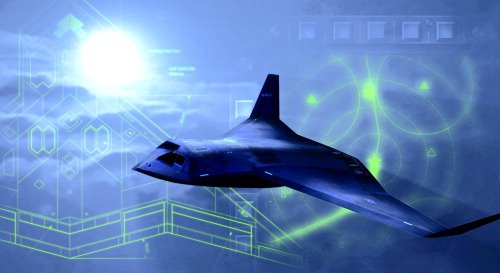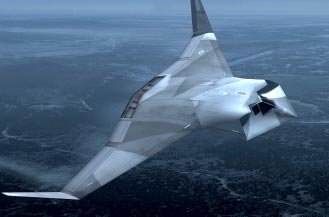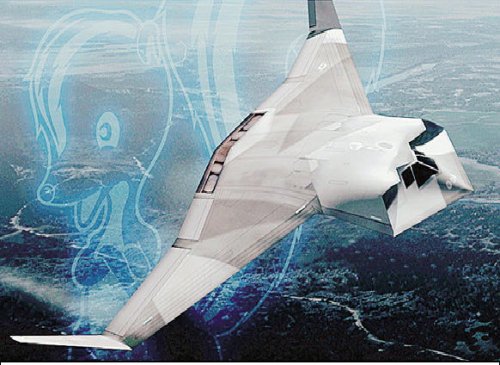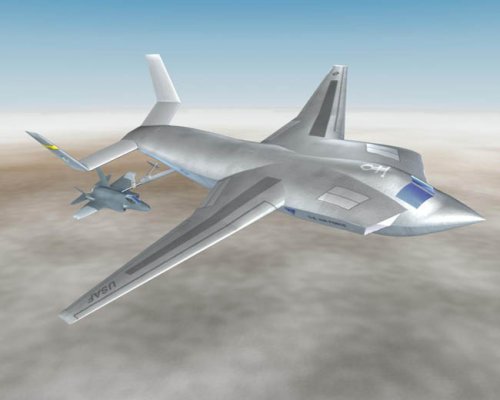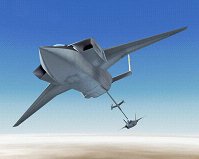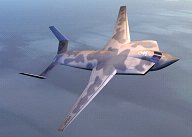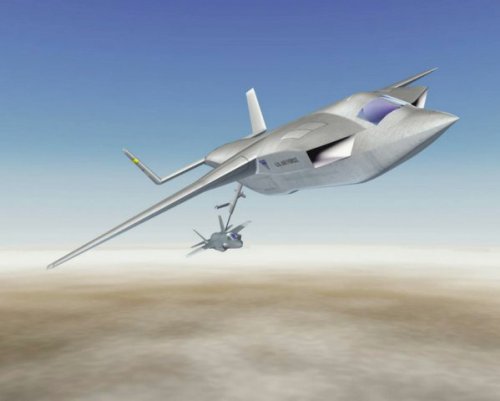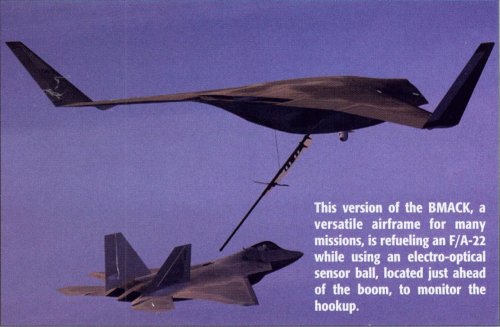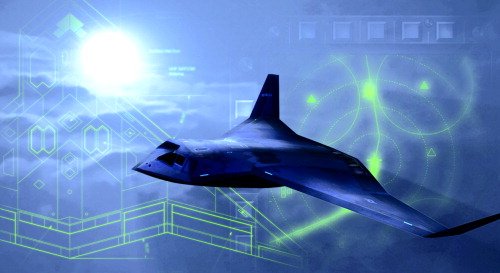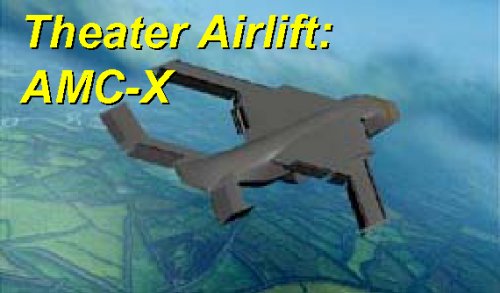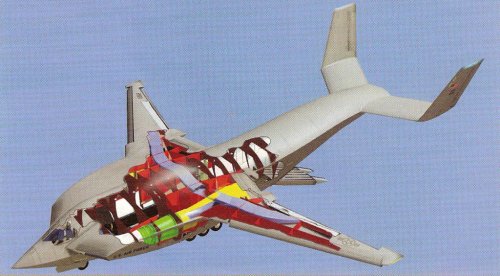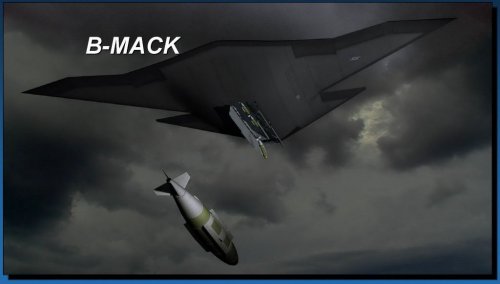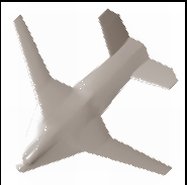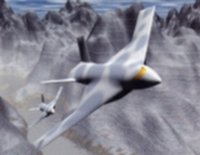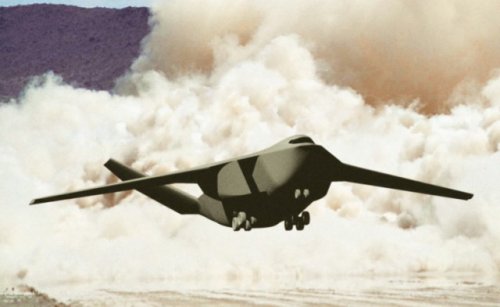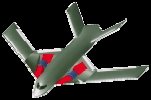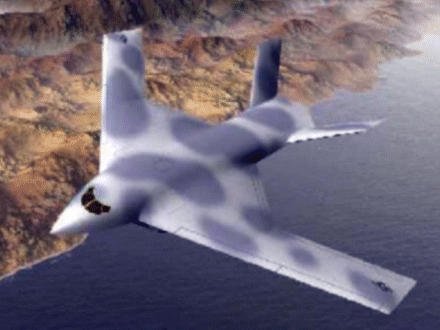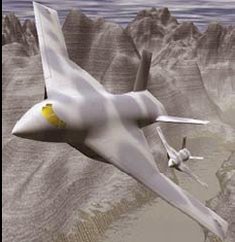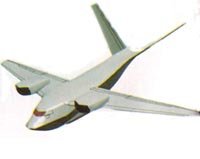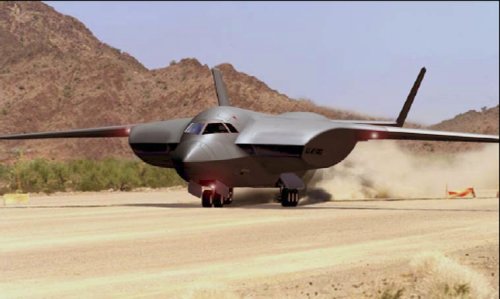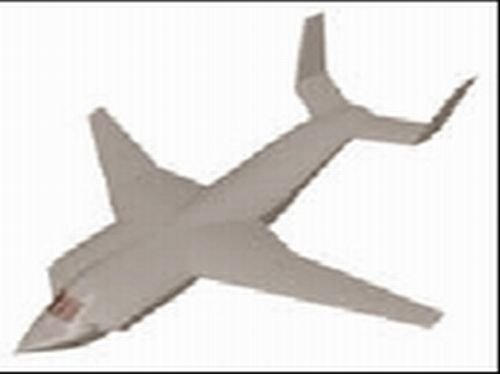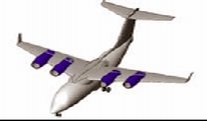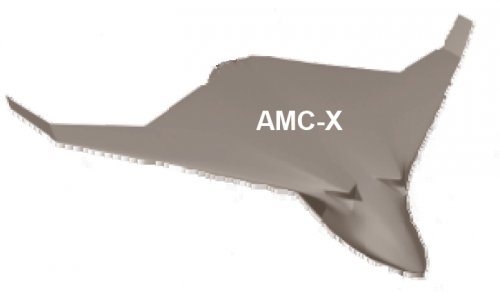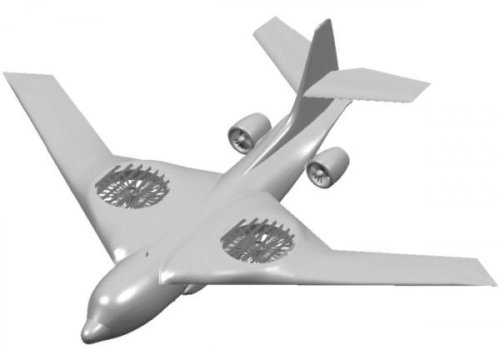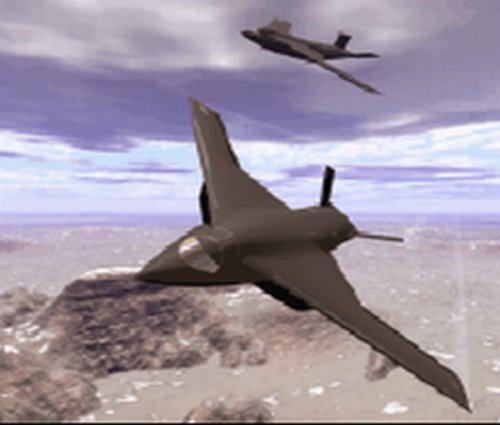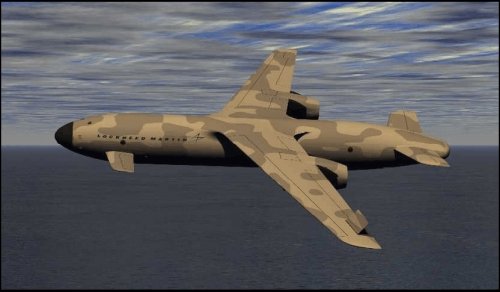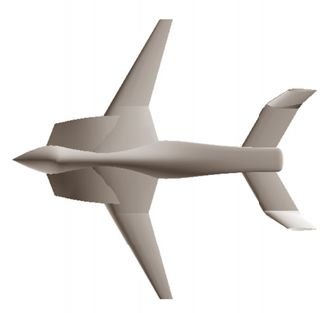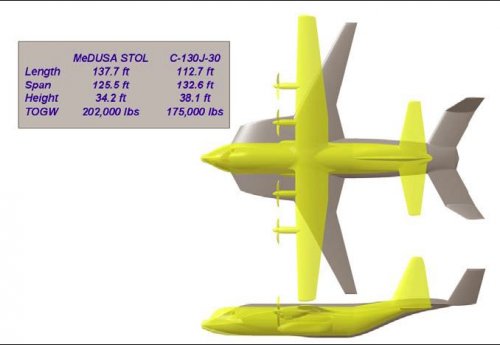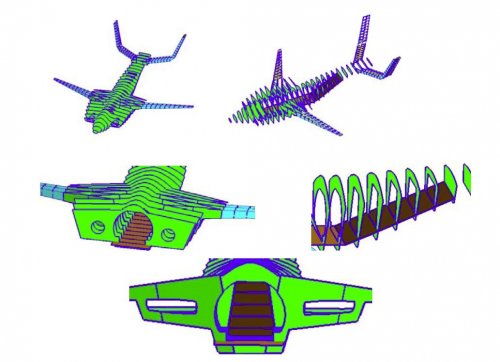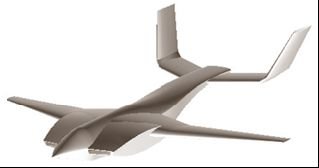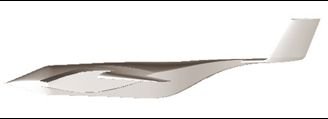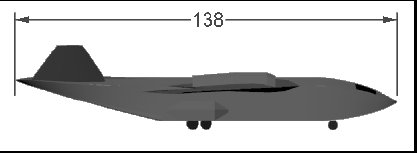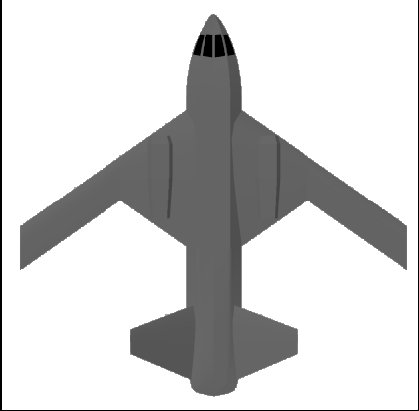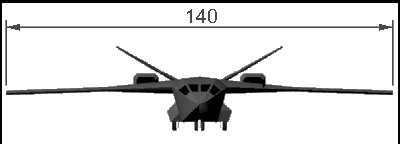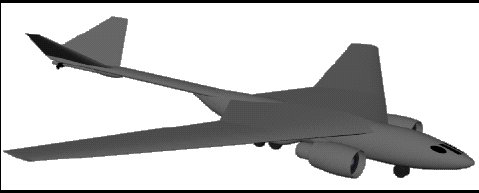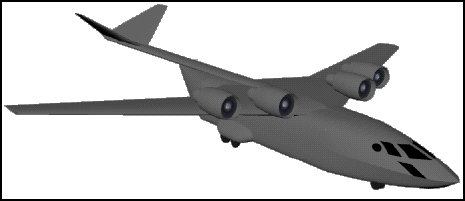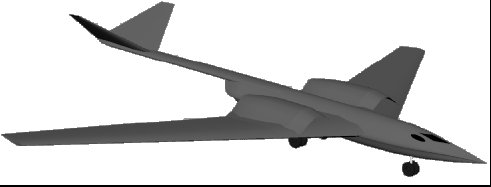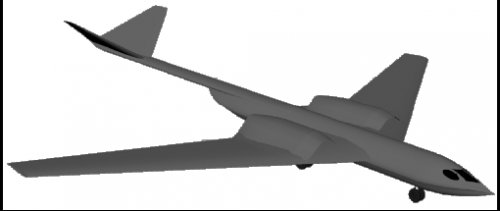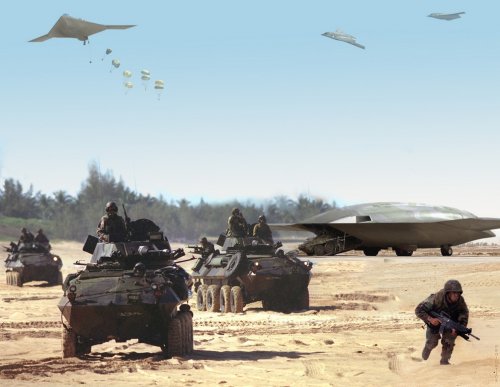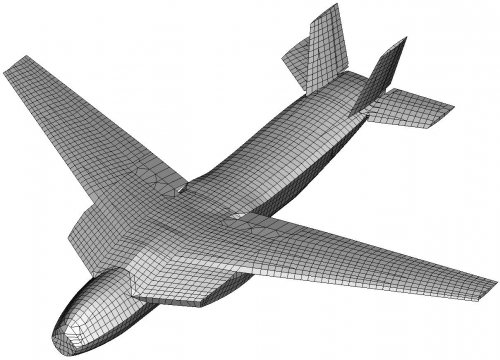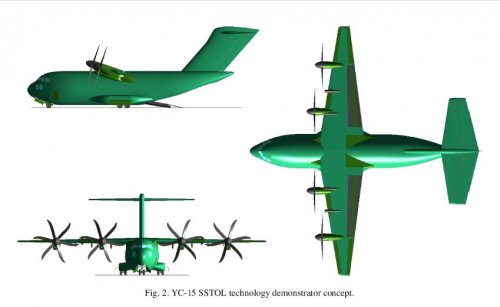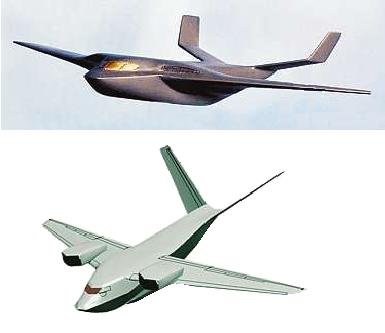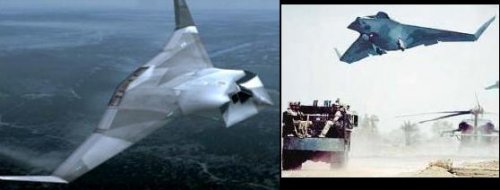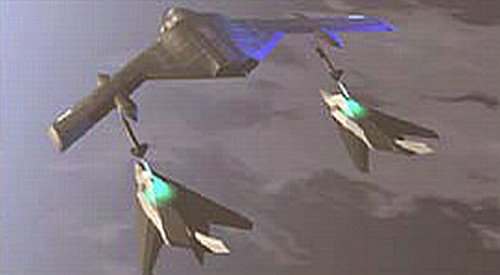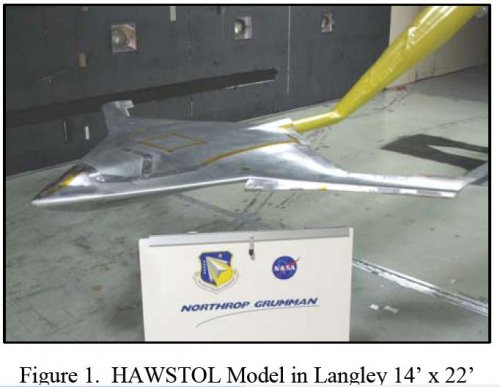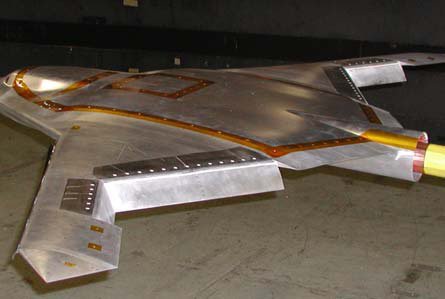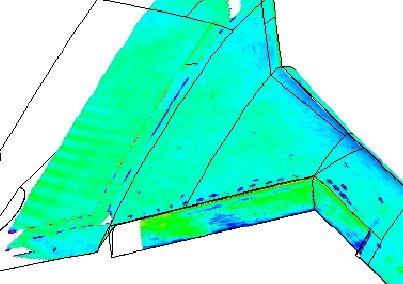- Joined
- 1 April 2006
- Messages
- 11,393
- Reaction score
- 10,278
Lockheed-Martin MACK
'Lockheed Martin Skunk Works has developed the concept of a modular large-body aircraft to undertake the range of roles listed. This aircraft, designated MACK, will be capable in M-X (special forces insertion), A-X (gunship), C-X (transport) and K-X (tanker) roles. Interchangeable modules can be fitted depending on the requirement.
MACK would have a tailless compound delta wing, with roughly the outer third bent upwards. Multi-spectral stealth characteristics would make it capable against both early warning and fire control radars. Its two engines would be installed inside the airframe. They would be high-bypass types, making them quieter and cooler.
The airframe itself would be made primarily of composite material, although existing composites would be employed in order to reduce costs. Like today’s dedicated strike/interdictor aircraft, MACK would be capable of terrain-following and terrain avoidance flight. It would also be fitted with both offensive and defensive self-protection systems. Aircrew would include pilot, co-pilot and navigator. Gross take-off weight would be 230,000 pounds to 240,000 pounds The engines would each provide 63,000 pounds of thrust, and field length with a 22,000 pound payload would be 1,500 feet.
The A-X itself would have two retractable guns in turrets, one installed above and one below the fuselage. With these guns, the aircraft would avoid the need for a racetrack flight pattern as used by the AC-130, which because it has guns on only one side must continually circle the target.
More recently, Lockheed Martin has evolved the MACK into a bomber model labeled BMACK. The completely new MACK/BMACK aircraft would be operational about 2020.'
http://www.military-aerospace-technology.com/linkto.cfm?DocID=852
'Lockheed Martin Skunk Works has developed the concept of a modular large-body aircraft to undertake the range of roles listed. This aircraft, designated MACK, will be capable in M-X (special forces insertion), A-X (gunship), C-X (transport) and K-X (tanker) roles. Interchangeable modules can be fitted depending on the requirement.
MACK would have a tailless compound delta wing, with roughly the outer third bent upwards. Multi-spectral stealth characteristics would make it capable against both early warning and fire control radars. Its two engines would be installed inside the airframe. They would be high-bypass types, making them quieter and cooler.
The airframe itself would be made primarily of composite material, although existing composites would be employed in order to reduce costs. Like today’s dedicated strike/interdictor aircraft, MACK would be capable of terrain-following and terrain avoidance flight. It would also be fitted with both offensive and defensive self-protection systems. Aircrew would include pilot, co-pilot and navigator. Gross take-off weight would be 230,000 pounds to 240,000 pounds The engines would each provide 63,000 pounds of thrust, and field length with a 22,000 pound payload would be 1,500 feet.
The A-X itself would have two retractable guns in turrets, one installed above and one below the fuselage. With these guns, the aircraft would avoid the need for a racetrack flight pattern as used by the AC-130, which because it has guns on only one side must continually circle the target.
More recently, Lockheed Martin has evolved the MACK into a bomber model labeled BMACK. The completely new MACK/BMACK aircraft would be operational about 2020.'
http://www.military-aerospace-technology.com/linkto.cfm?DocID=852

